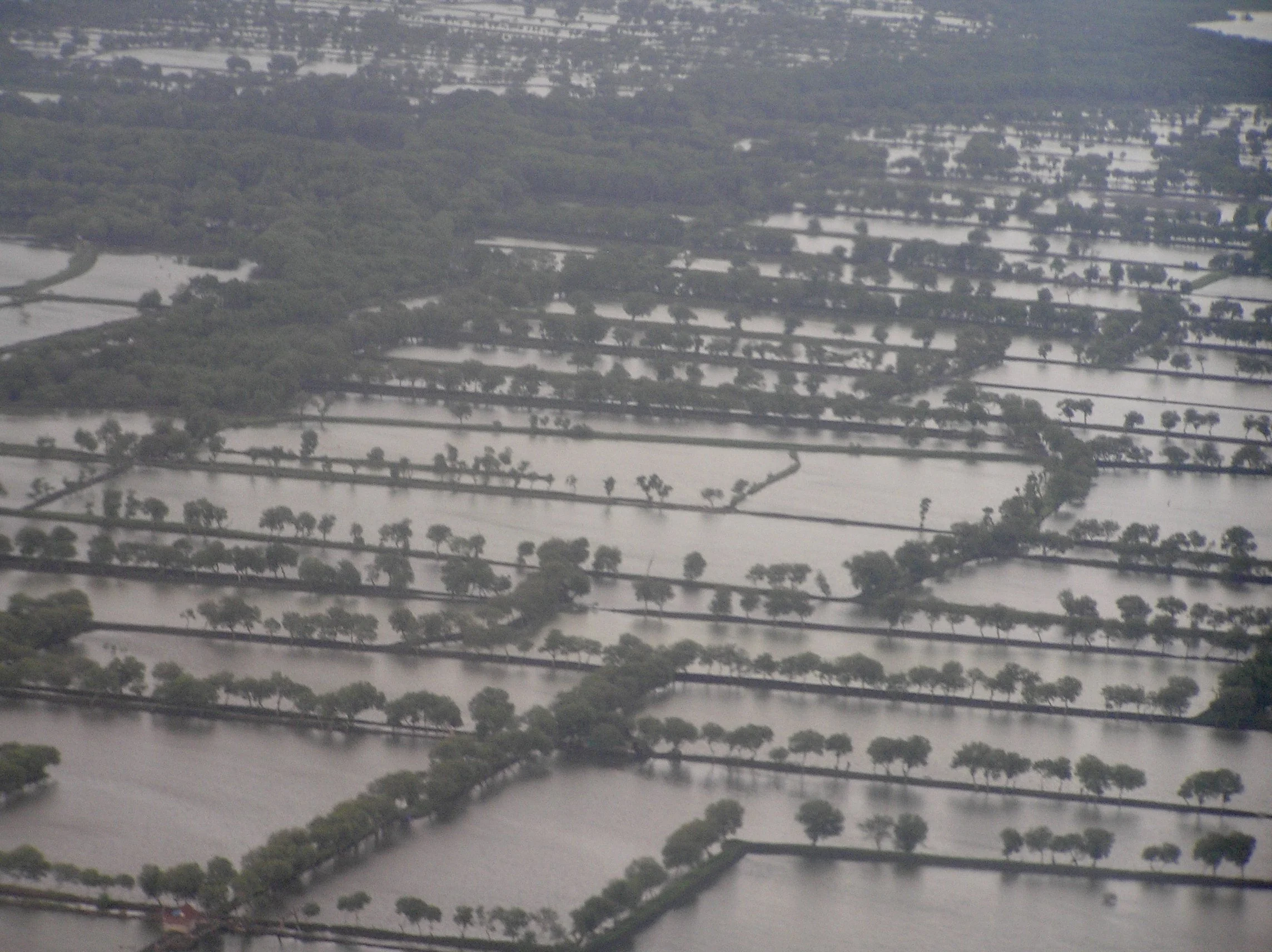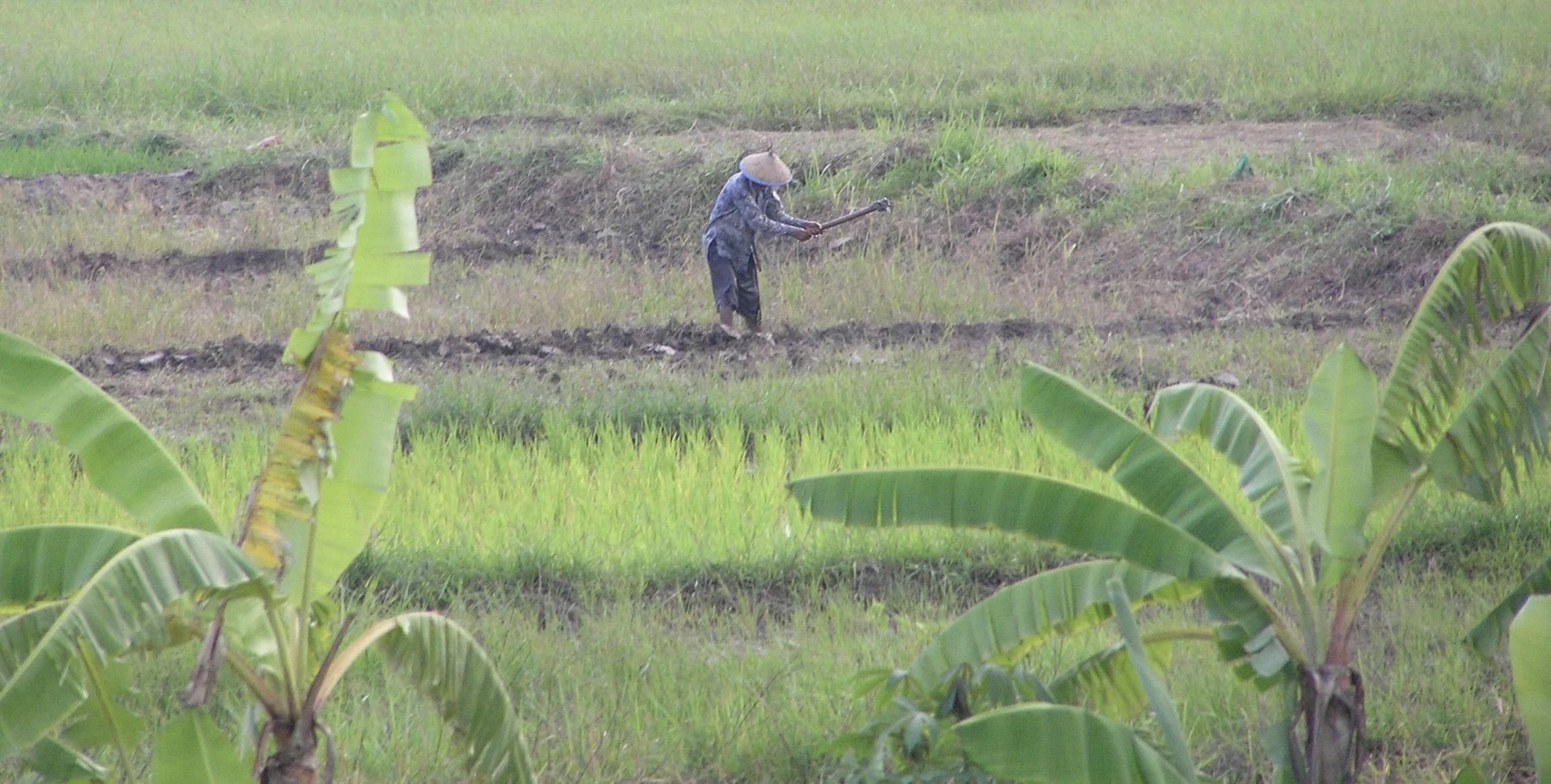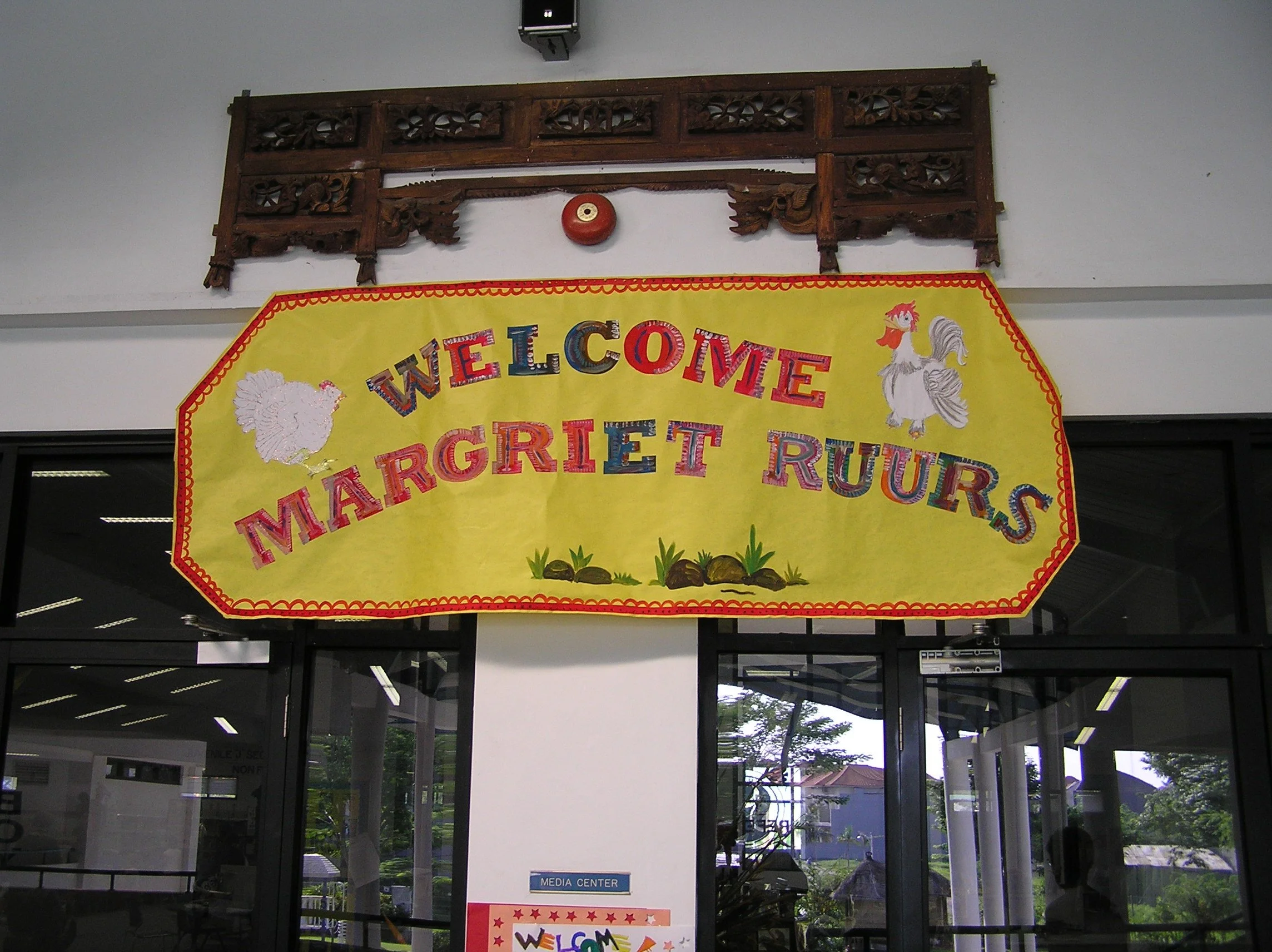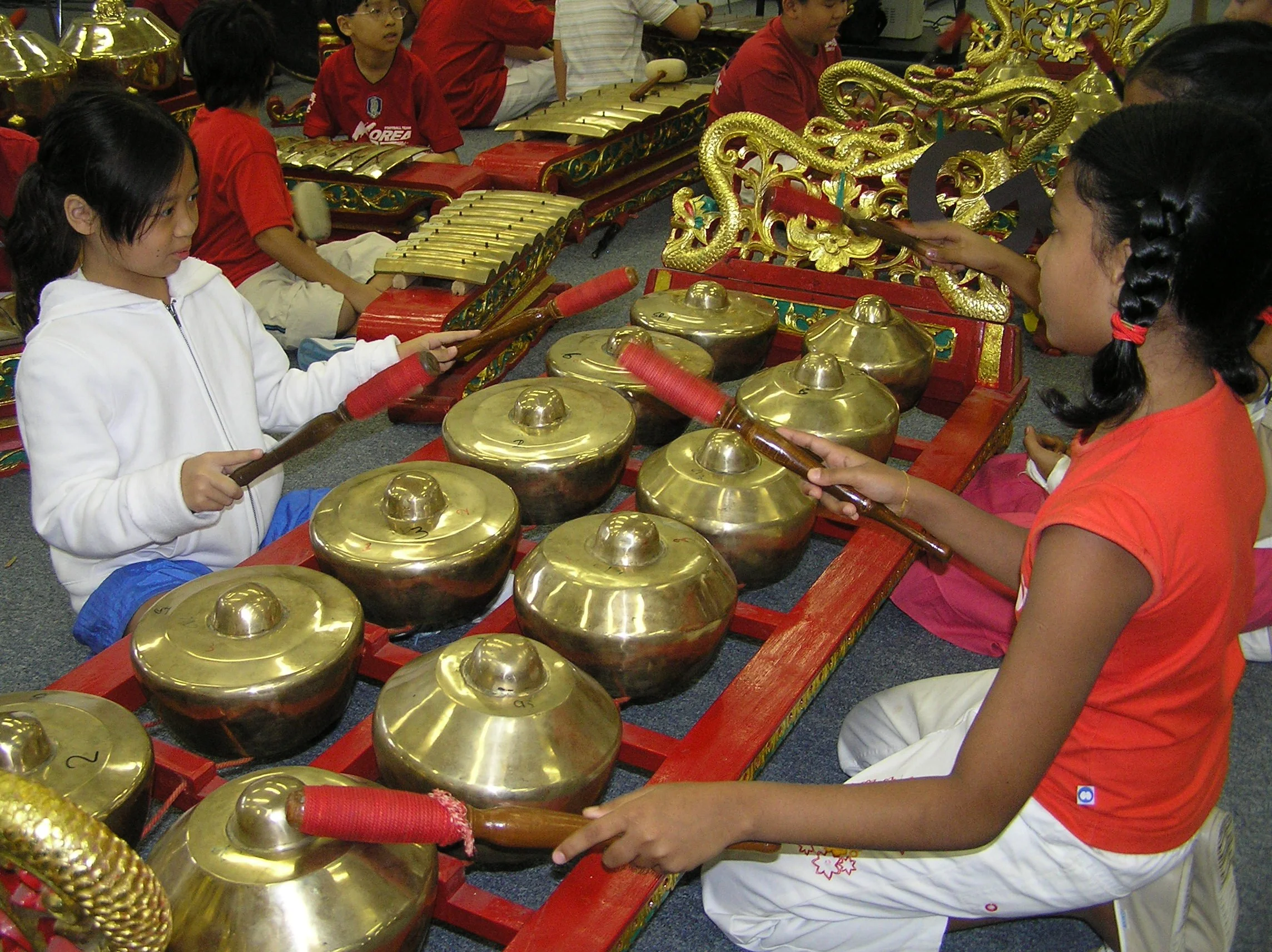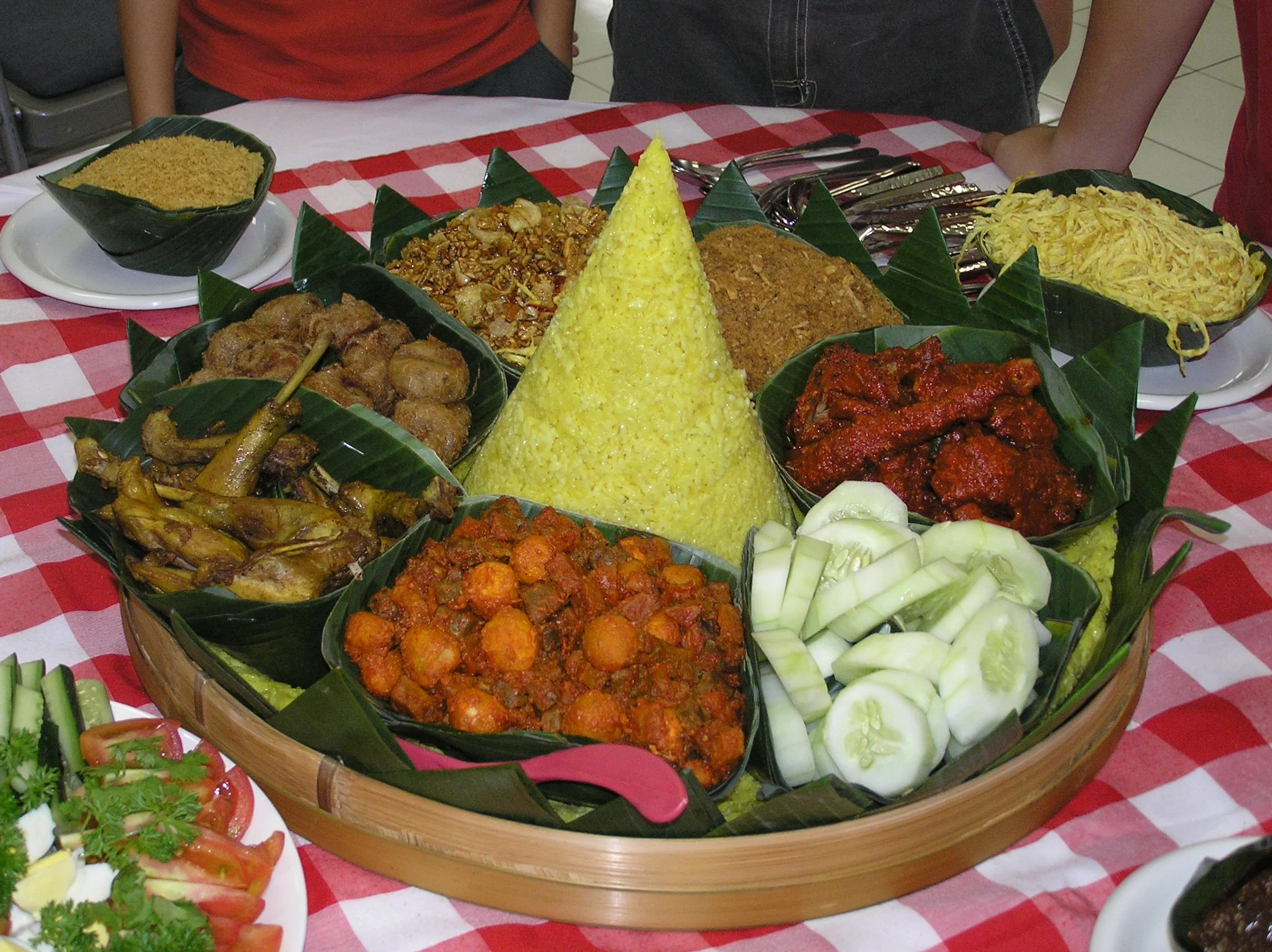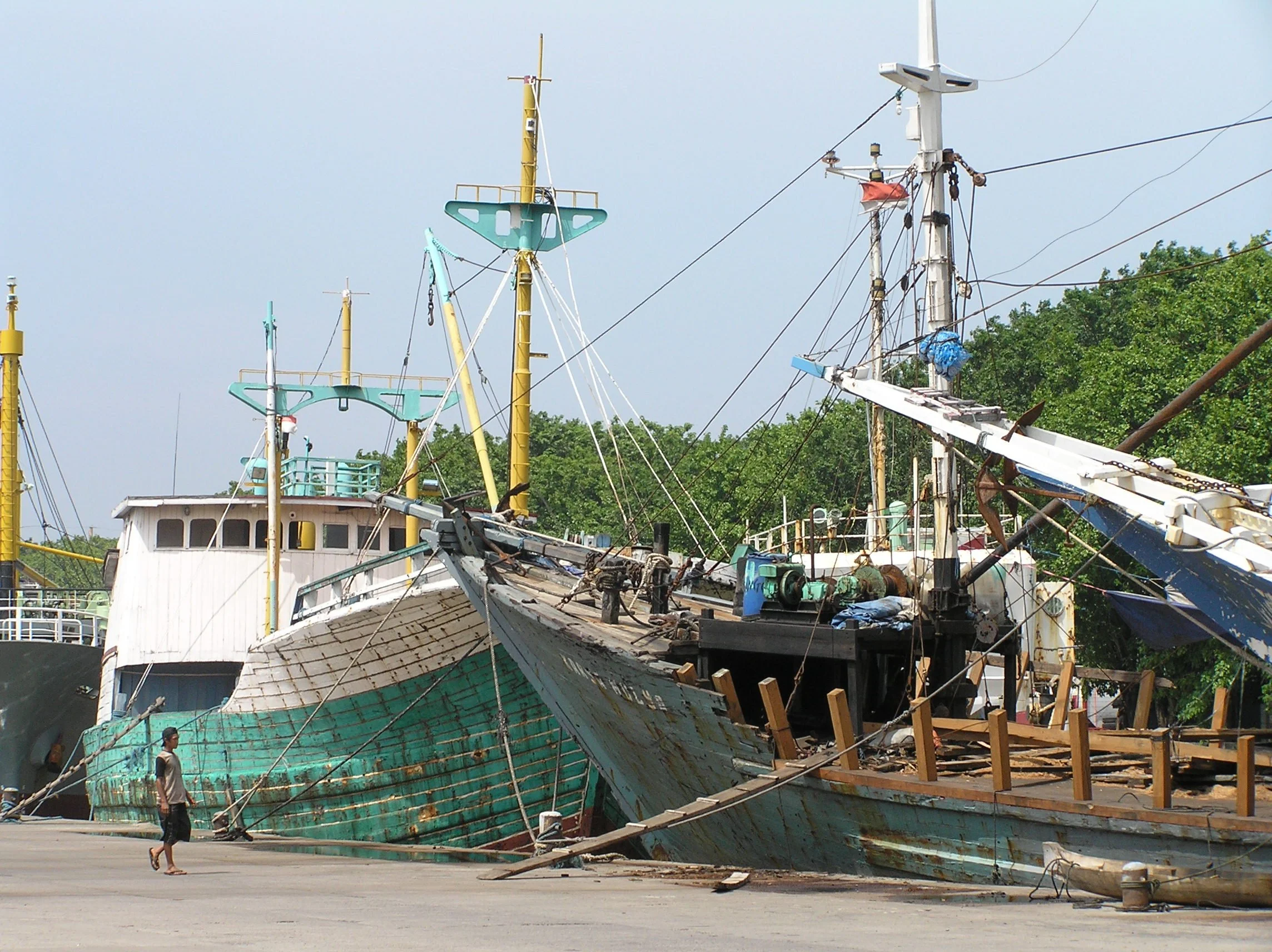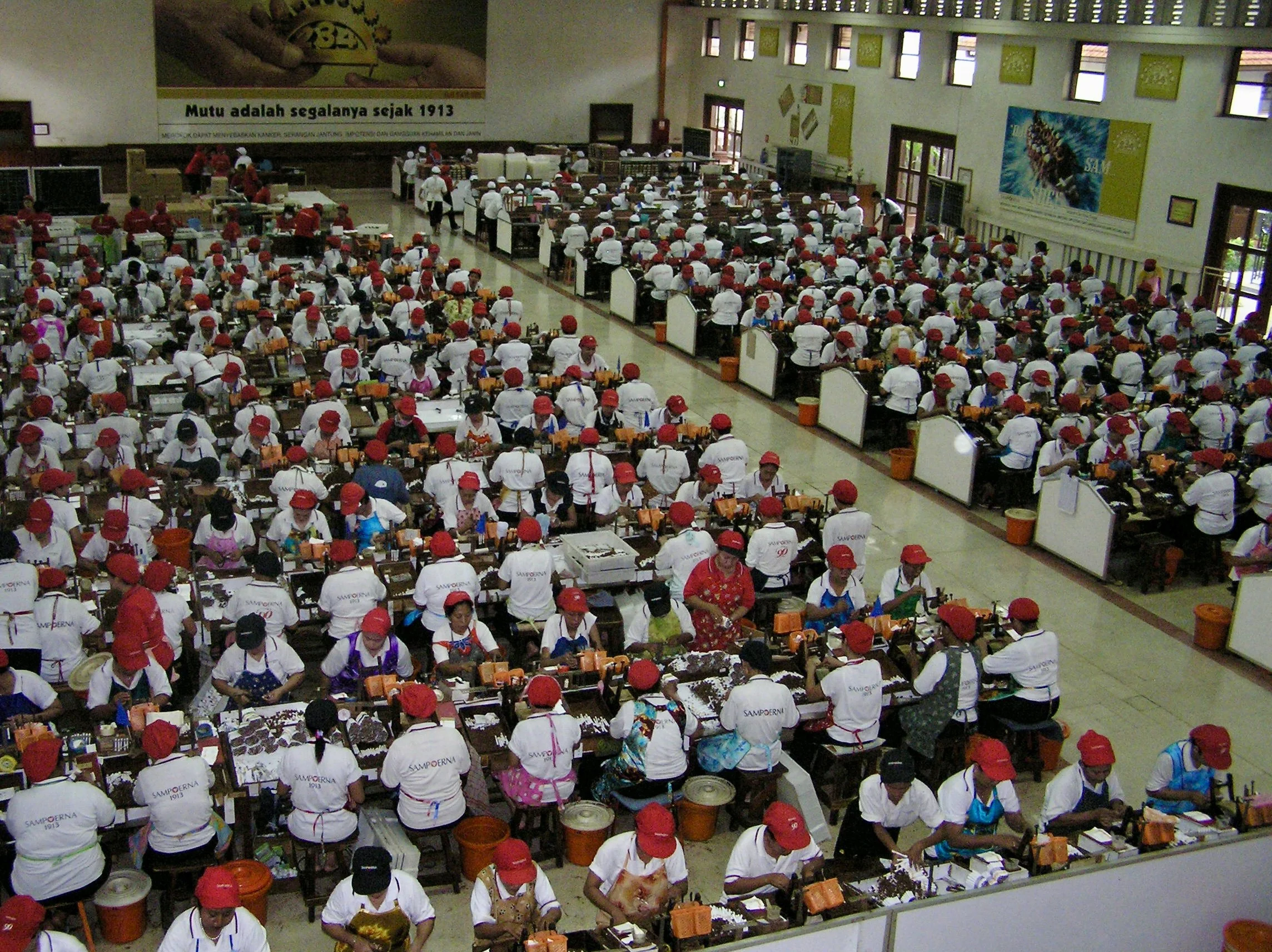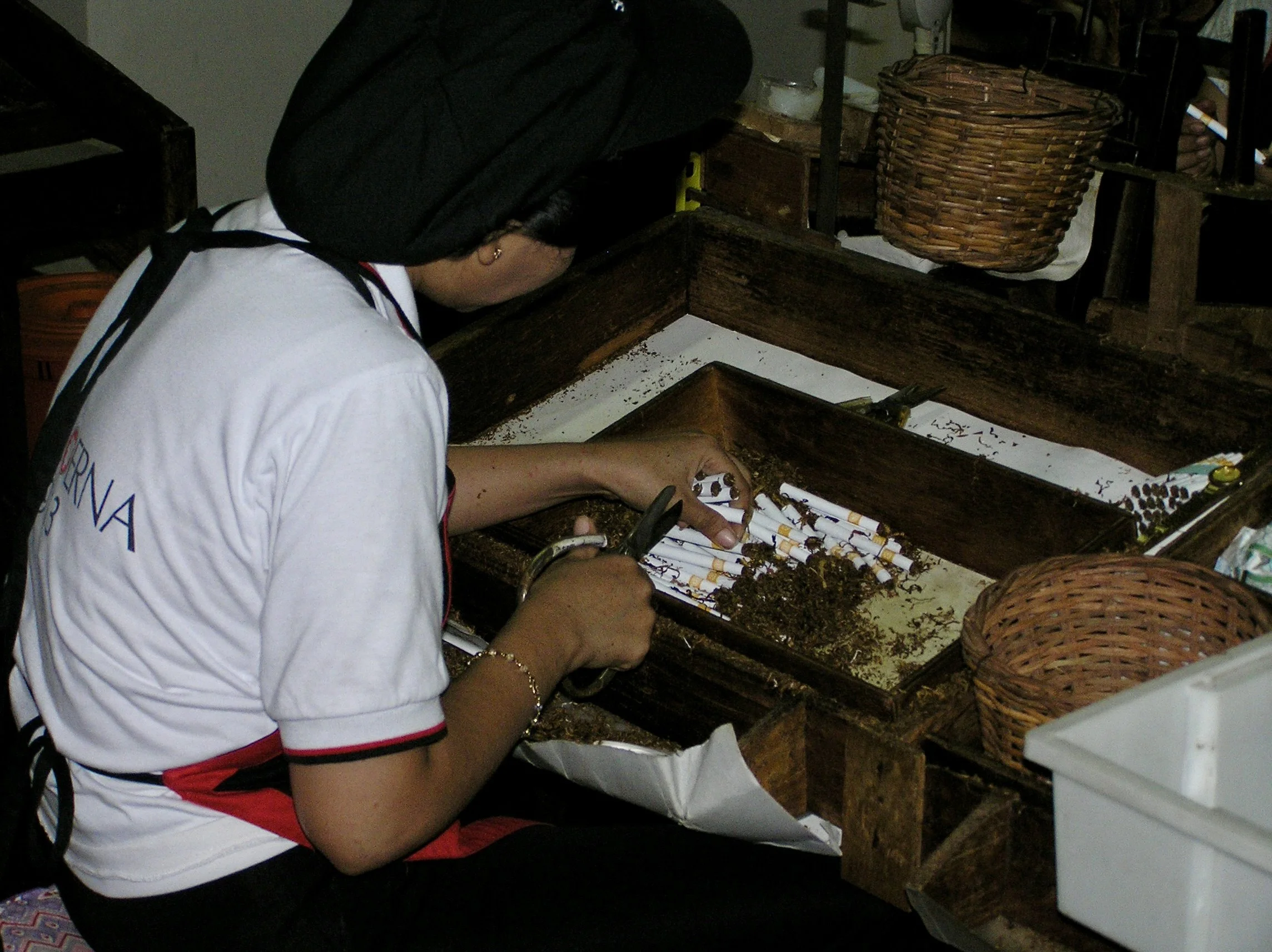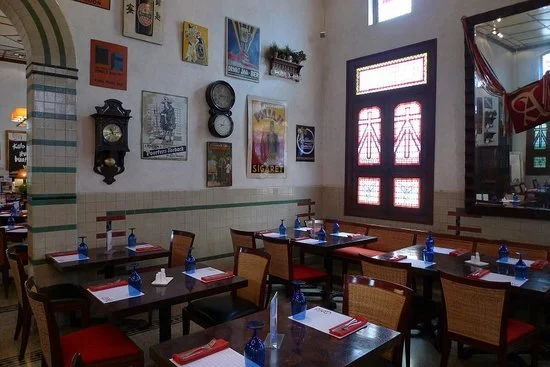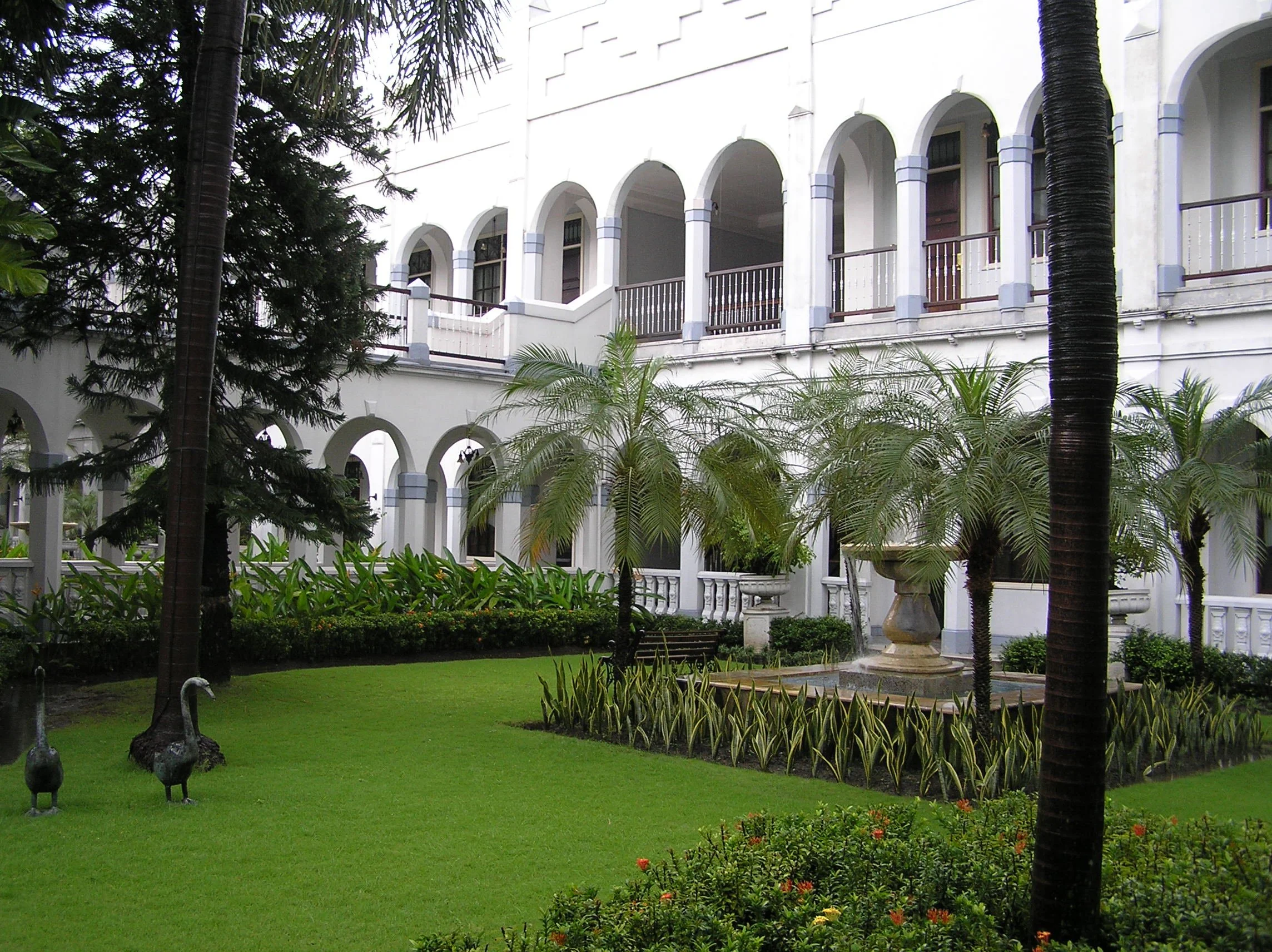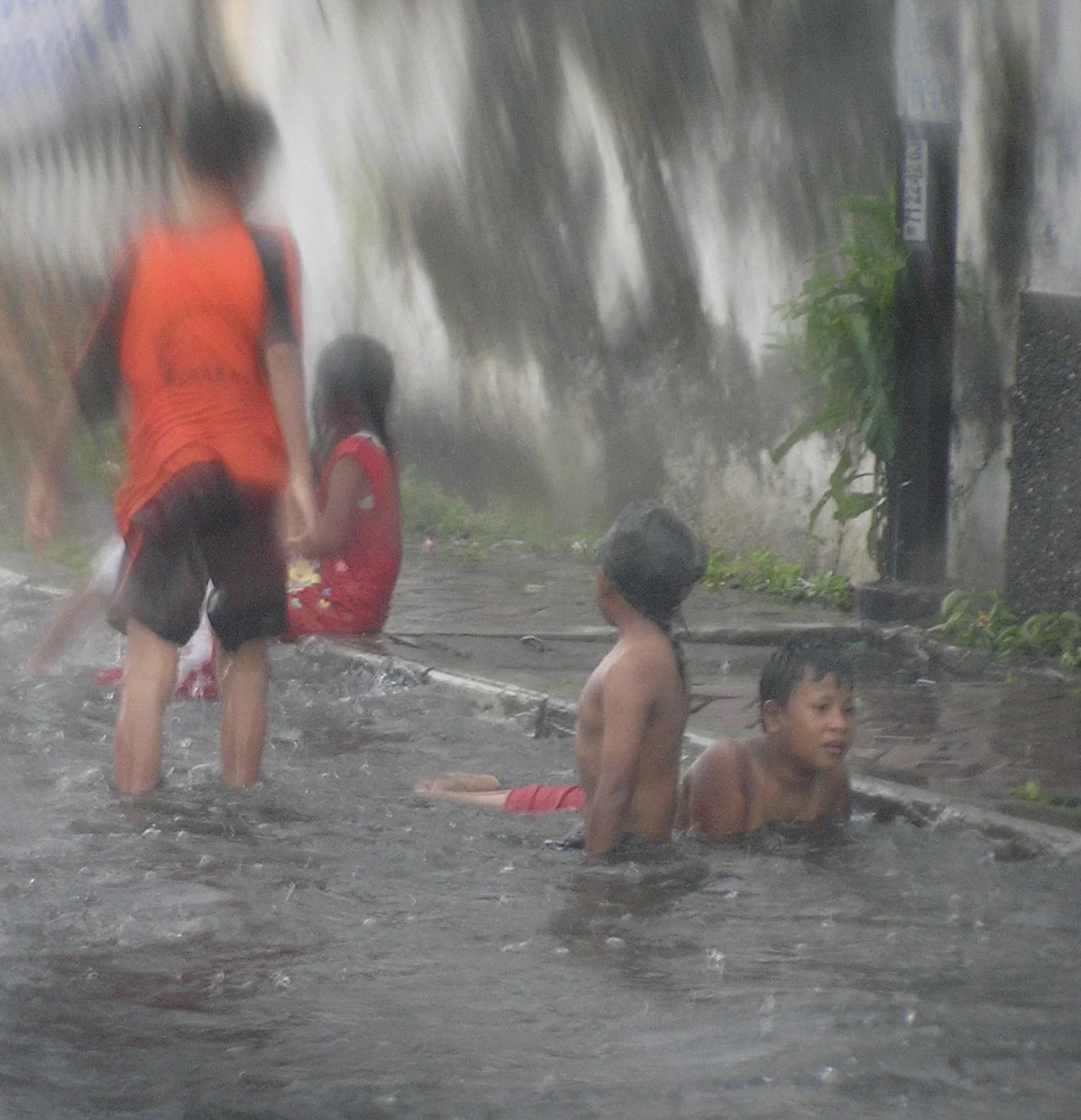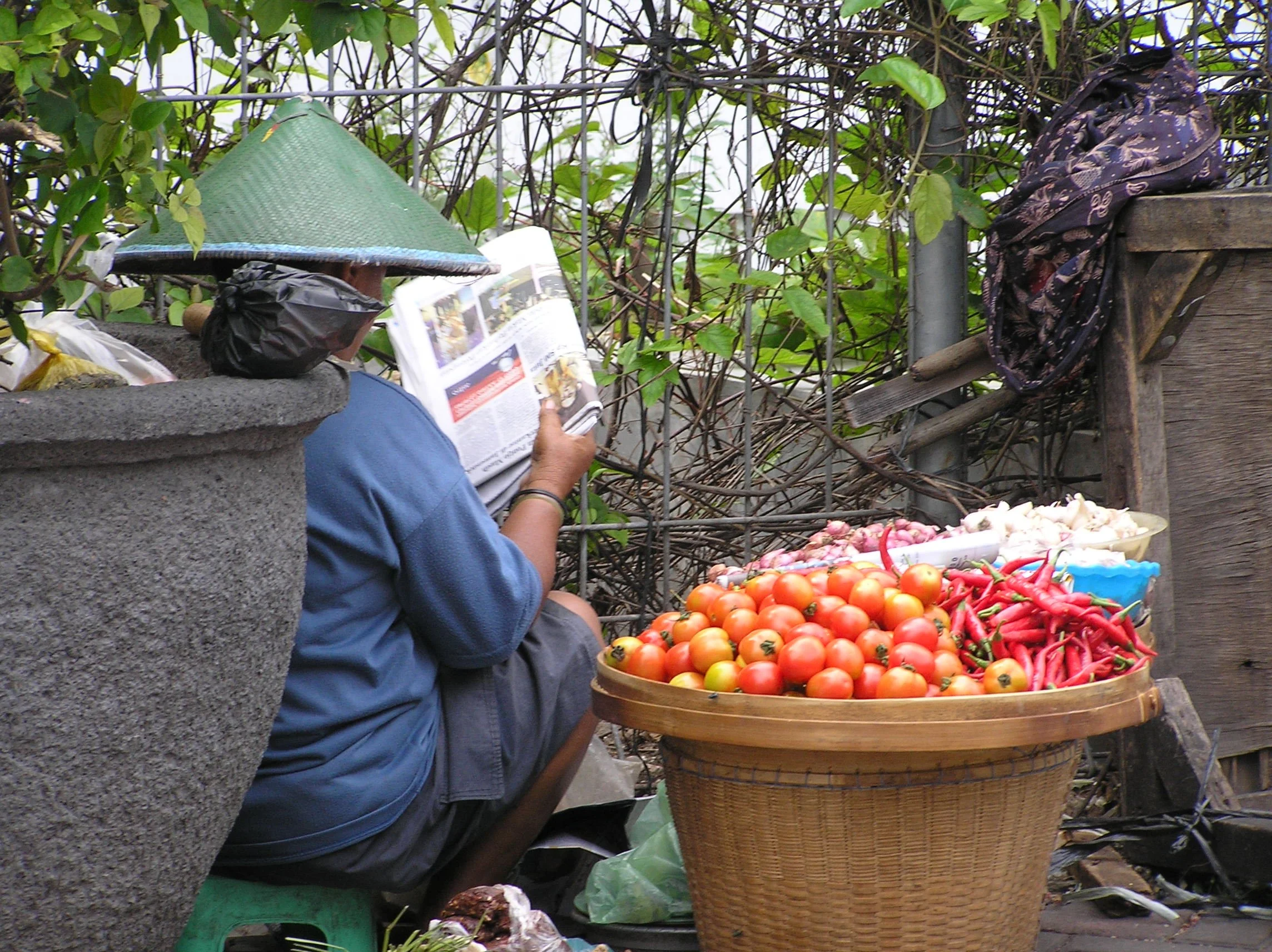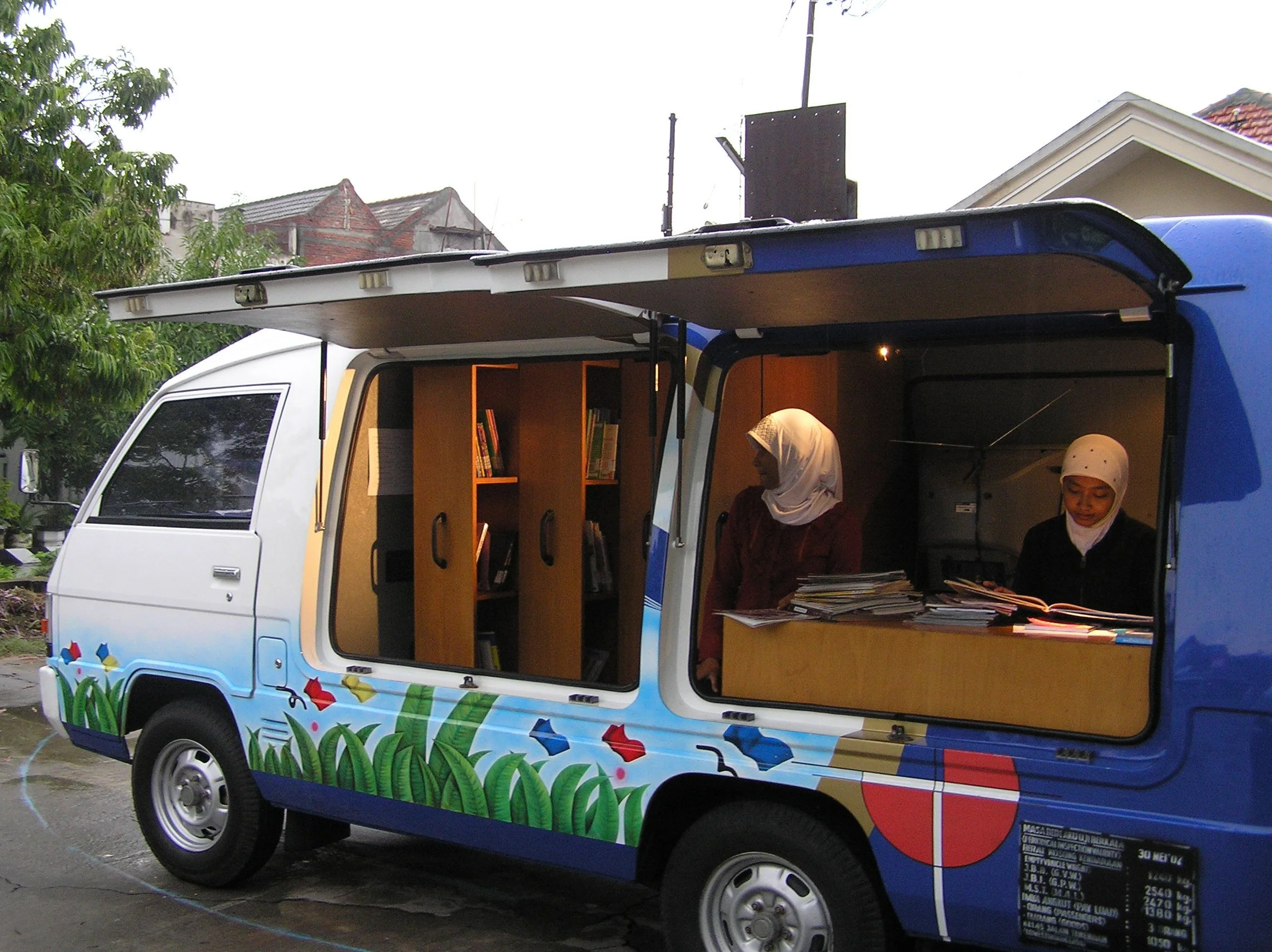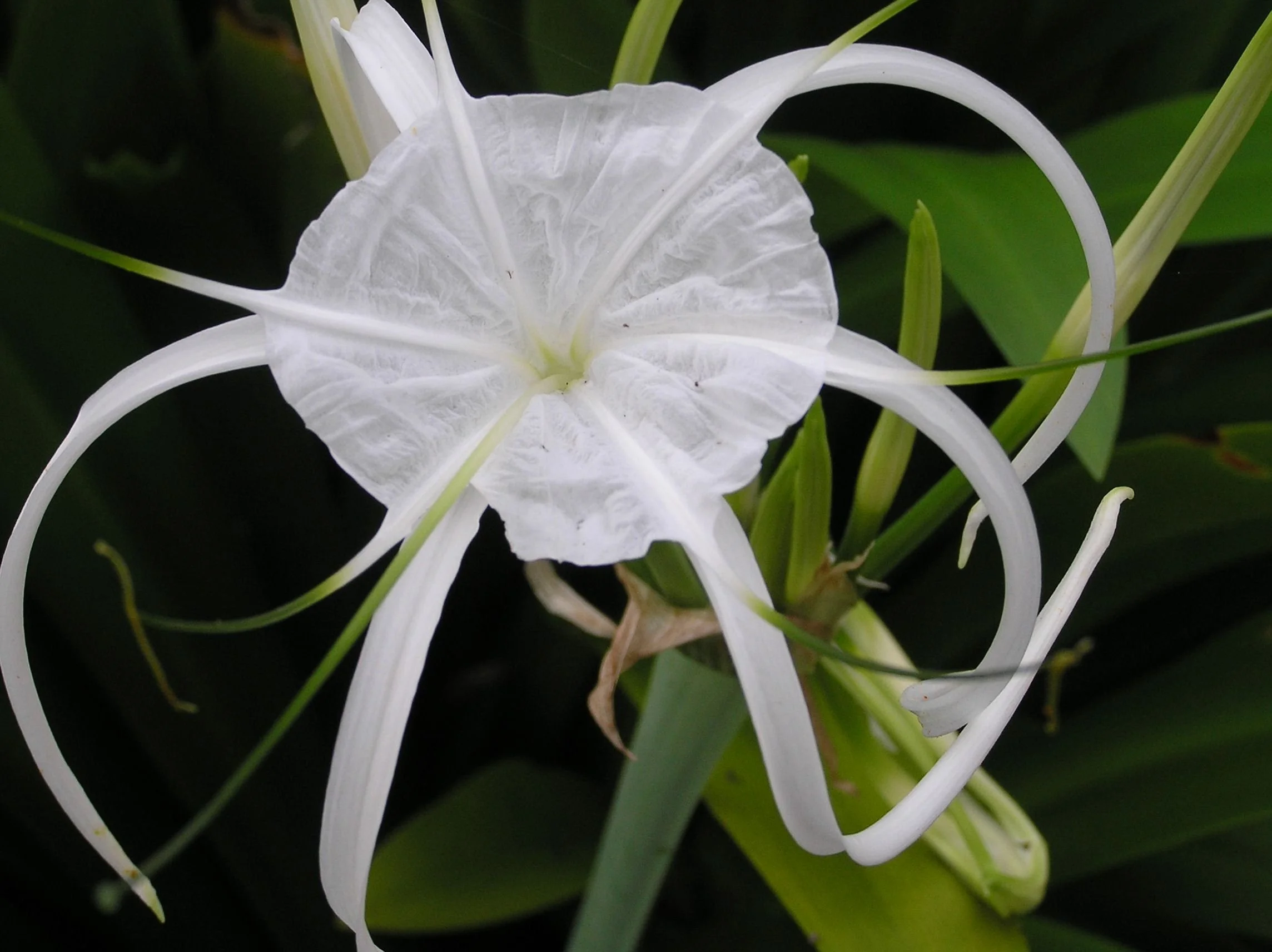In previous blogs about Indonesia, I shared stories about our time on Borneo and Sumatra. This time, I’d like to take you along to the island of Java. It is a long skinny island with the capital city, Jakarta, on it. Java is one of the most densely populated islands in the world with more than 140 million people. I spent most of my time in the city of Surabaya.
International Schools are always so welcoming!
The flight from Borneo to Surabaya is about an hour and a half. I was the only westerner on board. Everyone smiled and was extremely friendly. A lady came to sit next to me and never left my side until I left the airport in Surabaya. She didn’t say much but quietly made sure I knew what to do and where to go. Coming into Surabaya, on east Java, the plane flies low over miles of shrimp farms, large rectangles of water with small shacks on narrow paths connected the shrimp ponds.
Students play the gamalan.
Surabaya is my last stop in Indonesia. I’m staying at the house of the very nice principal of the International School here. The house is a gorgeous mansion with large rooms, marble floors and a perfect pool in the tropical backyard.
On my first day at school I was served a traditional Javanese welcome dinner: a round bin with a pointy cone of yellow rice covered with a palm leaf lid, surrounded by dishes of meat, coconut, tofu, chicken, quail eggs, beef and vegetables.
In the harbour of Surabaya we watched many wooden ships being loaded and unloaded: rice, ratan, and much more.
All workmen carrying huge loads on their shoulders, up and the narrow gang planks and always walking on bare feet. These dark, rough men all waved and smiled and wanted me to take their pictures.
Then we visited the Sampoerna cigarette factory. I wasn’t terribly interested in how cigarettes are produced but I was interested in seeing where many people work. It was founded many years ago by an Indonesian family and is a major employer. The building itself is a historical Dutch structure that once served as an orphanage. We visited an upstairs viewing room which offered a view of the entire factory below to see how everything worked. It was absolutely incredible and if you’re ever unhappy with your job, you only need to take one look at these workers to feel better.
Cigarette paper is stretched over a wooden frame. Each worker has a pile of freshly crushed tobacco in their lap, picks some up, distributes it, pulls a wooden handle to roll the cigarette, cut the paper, trim the ends of the cigarette and adds it to their pile. This entire process take about 4 seconds! Their hands were a blur of motion as they pulled, piled and cut. Too fast to even really see what they were doing. And they do this all day, every day in sweltering heat. Below the viewing room is an enormous factory floor full of these machines and people, row after row, all going through the same motions to roll the tobacco into cigarettes. It’d be enough to make you stop smoking if you did.... Add to all this a heavy, overpowering smell of fresh tobacco that made my eyes water.
We did have a very good cup of... java in a cute restaurant in the same building. It could have been in Amsterdam with its dark paneling, leaded glass windows and grandfather clocks.
We drove to downtown Surabaya - a huge city but consisting mostly of very poor shanty town neighborhoods. In contrast, there are also ultra modern high rises with offices and computer stores. Each day I drive past rice paddies where women are harvesting long strands of rice plants. Then I see the buildings of the university and gorgeous statues of white horses and dancers along roads that lead into neighborhoods with enormous houses. The contrast between rich and poor here is very sharp.
Downtown has many Dutch buildings (geveltjes). But most of them old and in a state of disrepair. One beautiful building was Hotel Majapahit Surabaya, previously known as Oranje Hotel. Built in colonial style in 1910, this is where Indonesia signed its independence agreement with The Netherlands in 1947. Most say that Indonesia’s red and white striped flag stems from the Dutch flag without the blue stripe. The hotel is glorious colonial building with dark wood bannisters and a court yard lined with palmtrees.
Free bath!
At one point it started to pour. I mean POUR! Like a typical tropical deluge, buckets and buckets of rain poured down in a solid sheet. And in no time at all you couldn’t see the roads any more. Most roads looked like the canals. Children were bathing, waist deep in the running torrent - many ran home for soap and shampoo and splashed happily in the puddles - all lathered up.
Veggies for sale.
Everywhere are little food cart, often hand pushed cart with a glass display case. These sell nasi goreng, fruit, etc. You can buy a decent meal on the street for less than 50 cents. I spotted monkeys tethered to a cart, stalls of rambutans and oranges, and adults washing themselves in the muddy brown canal. The kampongs are whole neighborhoods of rusted zinc roofs on rough wooden shacks. Sometimes the houses are on stilts but at times of heavy rain or high water, these entire neighborhoods can flood.
During one of my forays into the city we discovered that one of Indonesia’s mobile libraries was operating in Surabaya and the teacher/librarian made several phonecalls to locate it. Of course, we then had to go find it and see it in person! After driving for hours, we reached a neighborhood on the outskirts of Surabaya where the mobile library would be. After countless more phone calls, we finally found a small neighborhood park in between stone residences, where the van was parked! Smiling Moslem ladies waited for us and showed us proudly the pull-out shelves of books, the TV mounted to the outside to show videos and the glass display case. I’m glad I was able to present them with a copy of My Librarian is a Camel, which features several different mobile libraries in Indonesia.
I didn’t really want to leave warm, tropical Indonesia with all of its kind, smiling people. But I do hope to return soon!
RESOURCES:
•https://gokayu.com/indonesia/surabaya/attraction/house-of-sampoerna
